Ramanathapuram palace – near Rameshwaram

Road trips in India are full of surprises. Turn into a detour and you will find a historic fort or the ruins of an old temple or a lush field filled with sunflowers or a herd of elephants blocking your path. I did not have any wildlife encounter but I discovered a piece of history on a very busy road in Ramanathapuram in Tamil Nadu as I was on my way to Rameshwaram – a palace. This is one of the places to visit in Rameshwaram.
Please read the post below.
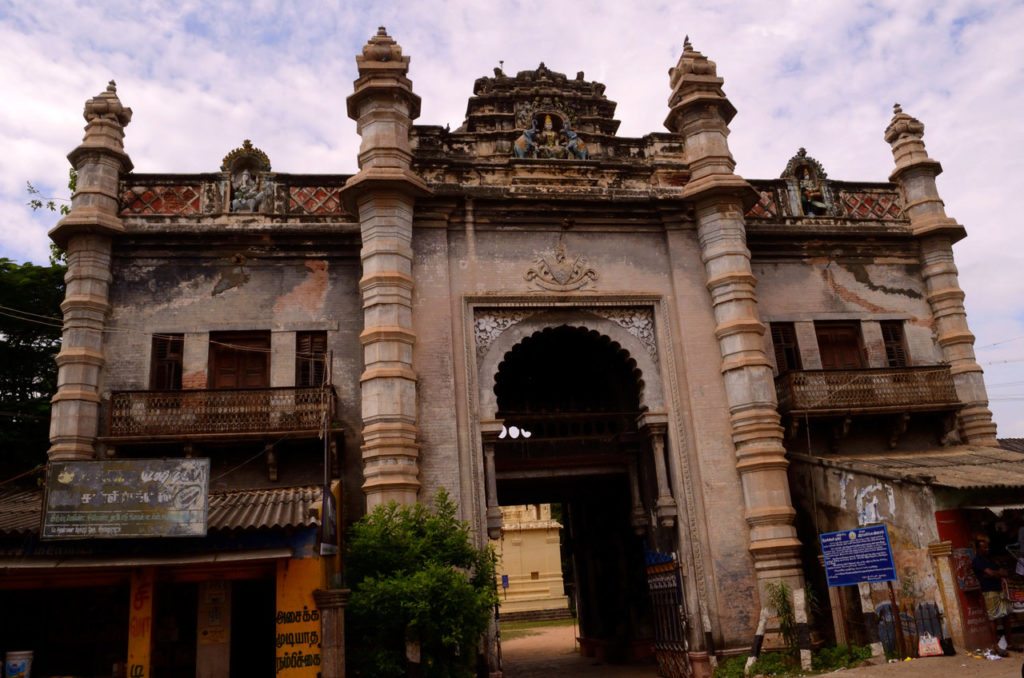
The entrance to Ramanathapuram palace
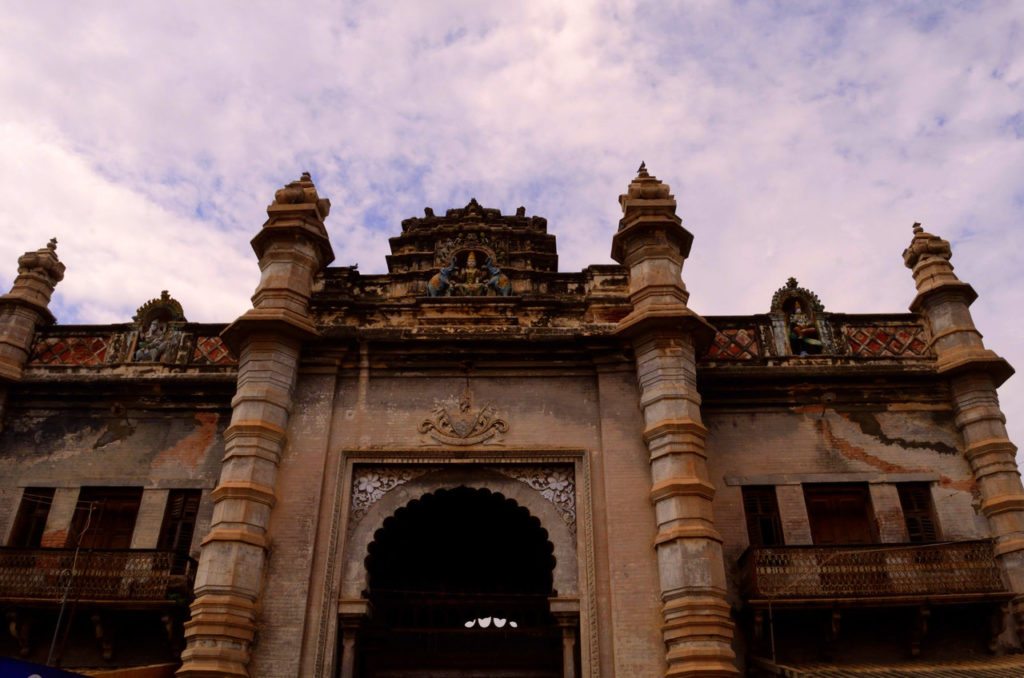
The entrance to Ramanathapuram palace – a closer view
There is no tourist board here that announces the presence of the palace. Nor is it located atop a hillock or beside a lake .It is on a crowded road rubbing shoulders with budget hotels and hardware shops.A petty shop selling everything from tea to cigarettes is in fact it’s very next neighbour.
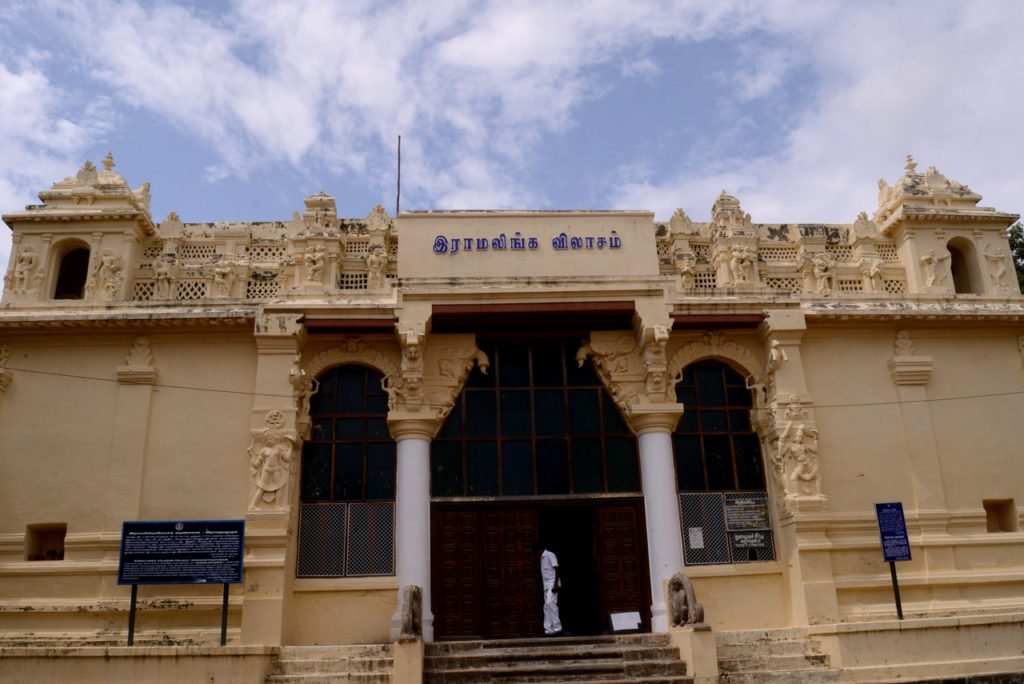
The durbar hall, now a museum
The portals however stand tall, amidst all the clutter almost touching the sky, reminding passers-by of its erstwhile glory. The pillars are strong and a deity stands there poised at the top. I cross the road avoiding the vehicles that constantly whiz past me as I try to get an uninterrupted view of the gates, only to see the electrical wires criss-crossing them.
A cyclist enters the gate and he is followed by two small boys, still in their school uniforms. The silence inside the palatial compound is a marked contrast to the busy traffic on the roads. The board finally announces that it is the Ramalinga Vilasam in Tamil. I am the only visitor here . The caretaker tells me that this palace built around the end 17th and early 18th centuries has weathered many a storm – nature’s fury as well as battles lost and won in this terrain.
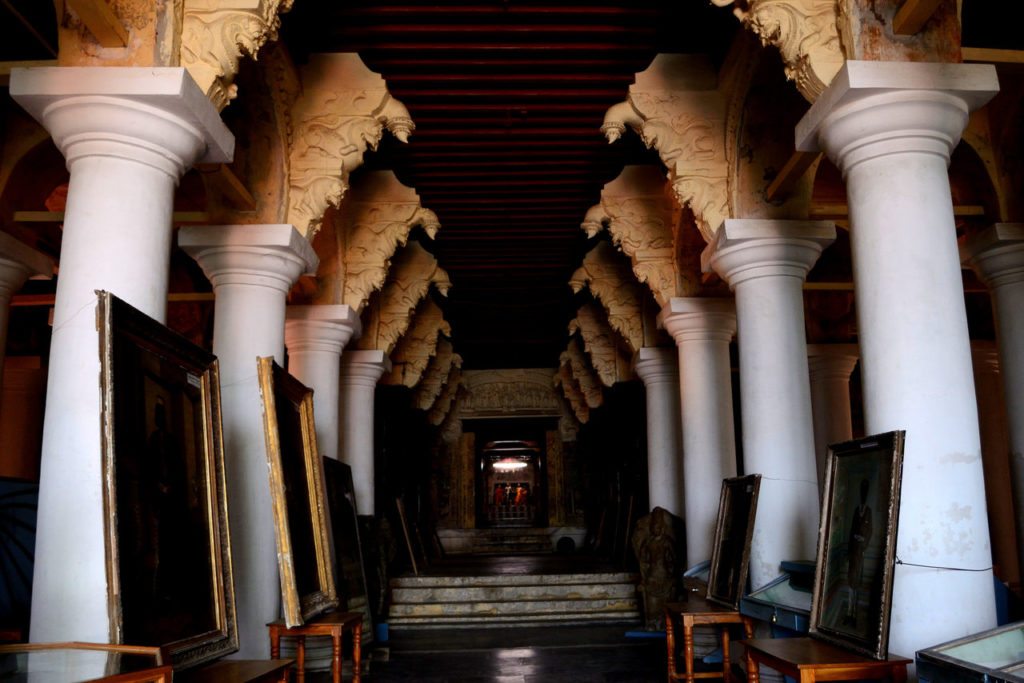
The corridors inside the hall
Ramanathapuram or Ramanad Palace is the home of the Sethupathy kings who ruled this region in the 17th century and were considered the guardians of the Sethusamudram near Rameshwaram. Pilgrims and travellers were protected by these rulers . The kings ruled parts of Southern Tamilnadu for more than 300 years and it is believed that some parts of the palace complex precedes even that era. You can see the palace in Ramanathapuram town.
The palatial complex includes their private royal rooms, the present residence where the present Sethupathy Maharaja stays with his family. Besides the many buildings, one can visit the temples and durbar hall which is today a museum. I enter the latter.
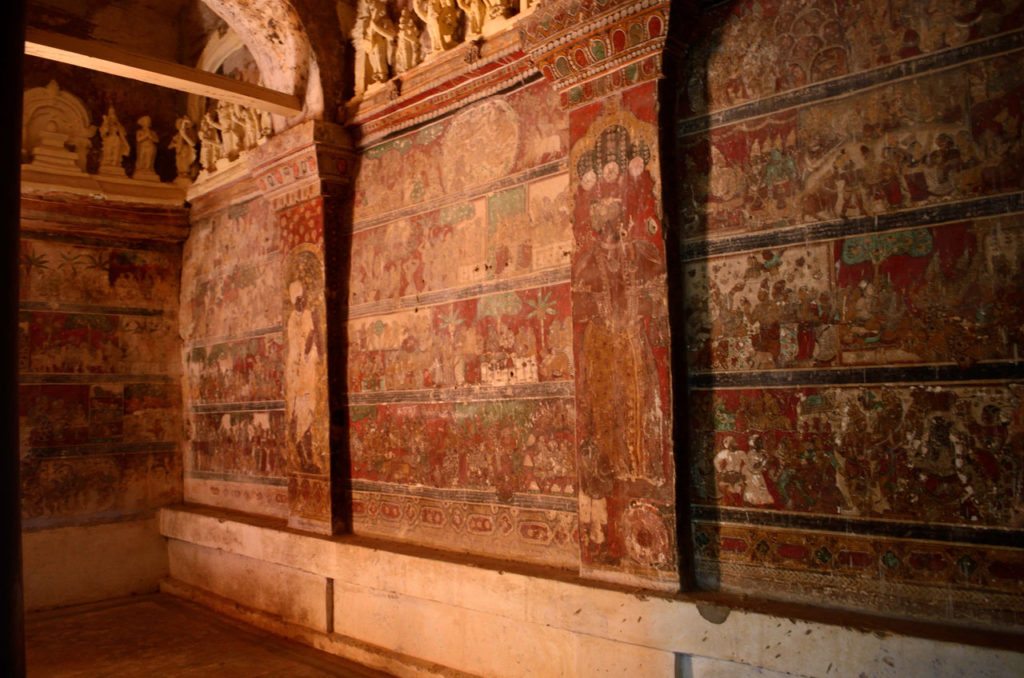
A wall of murals
Built during the era of Kizhavan Sethupathy in the 17th century, the durbar hall transports you into a visually colourful period of that era. With white pillars holding the foundation rather strong, the hall is a veritable storehouse of weapons and daggers. Walking along the dark corridors of erstwhile power, I am however unable to take my eyes from the murals on the wall. Besides the Gods and Goddesses and stories from epics and puranas, I look at some of the murals that depict war and peace treaties with kings and queens.
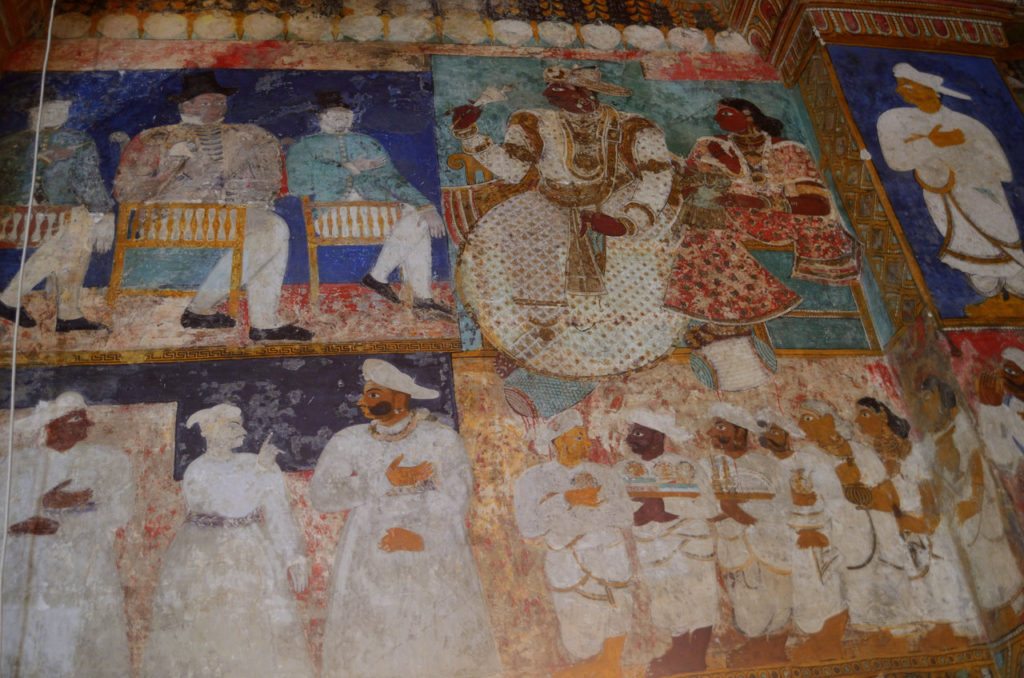
Politics and paintings
The Sethupathy kings are immortalised as well in the world of murals as they are shown rewarded and honoured by the Nayaks. The Marathas, the British, the Nayaks – the tableau of paintings take you into a world of various dynasties and stories of their flimsy friendships and power struggles. Decked in layers of costumes and bold jewellery, these rulers sit either at each other’s table for signing treaties or to form new conspiracies. The Europeans are here too, flattering the king and enticing them with gifts or demanding that they pay tribute to them. Eventually it was the British who deposed of the rulers here.
Almost every inch of the palace is coated with paint – from the ceilings to the walls. The lifestyle of the era is painted here in bold strokes depicting dances, sports as the romance of the era comes out alive in these panels.
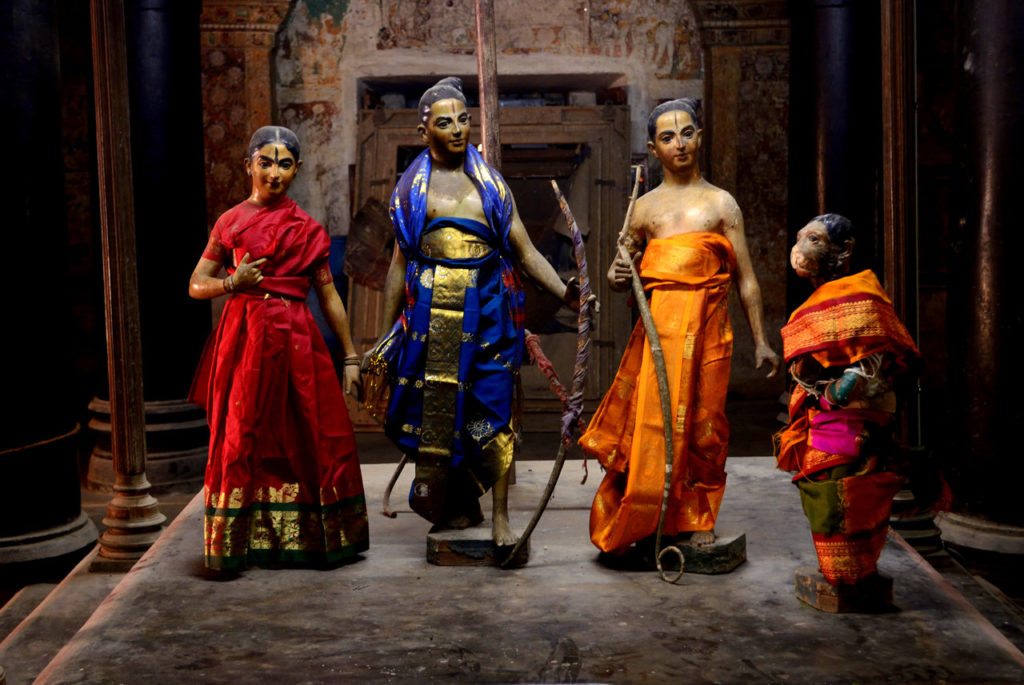
Idols of Rama, Sita , Lakshman and Hanuman in the hall
As I turn to leave, the light filters through the dark corridors . I can see silhouettes of young school boys who probably found the palace more interesting than school show up against the pillars. I stop by at the temple of Rajarajeshwari, the principal deity of the Sethupathy kings. The bells ring out aloud, as I am told that the idol was gifted by the Nayaks to the Sethupathis . She stands there watching over the palace, which has withstood many calamities over a period of time.
The current queen lives in Chennai but her cousin and his wife live in these premises and they even run a school here. My curiosity gets to me when I hear that the royal scion Sethupathi does meet guests and I decide to try my luck. A narrow arch adorned with a carving of the Goddess Lakshmi welcoming you to the town.
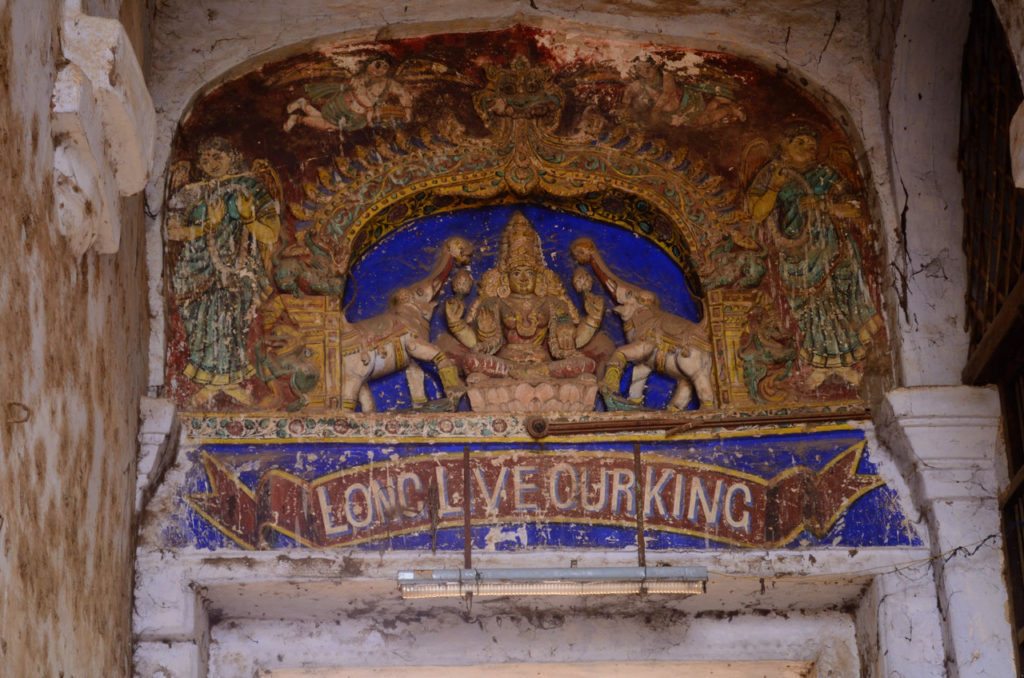
The palace is a veritable treasure trove
In bright blue and white paint is a blessing that says “ Long Live Our King.” I walk around, seeing old monuments in various stages of ruins and restorations . And that is when I see another board that has the crest of the kings and their names. The school is a little further away but the entire complex is filled with several monuments. An old man walking along the arch shows me around but I hear that the royal patrons are away in Madurai for the day.
The world inside these gates and arches is a far cry from the chaos outside it. Stately and poised, they stand in regal splendour taking one into the bygone days of the past. Palaces are purely symbols, reminding one of the erstwhile glory that has crumbled over the passage of time. Yet they stand there to tell you their story – if one is willing to listen.

Light streams in as I leave
Getting there
Ramanathapuram is less than 60 kms from Rameshwaram and it is well connected by road and rail from Chennai, Pondicherry and other cities. The palace is in the heart of the town and is open from 10 am to 5 pm with Friday being a holiday.
A version of this story was published in Yahoo Travel India
Also read
Tirupulani – sea, sand and legends from Ramayana

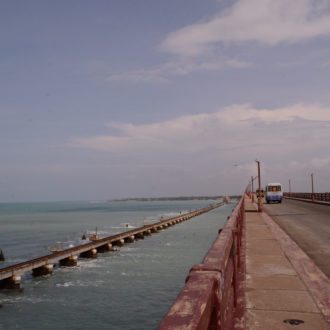
Beautiful….I must see this place. Sounds amazing! Nice pictures and write up.
Thank you..yes, please make a visit soon
Glad to know about this not so well known palace.
Thanks Niranjan